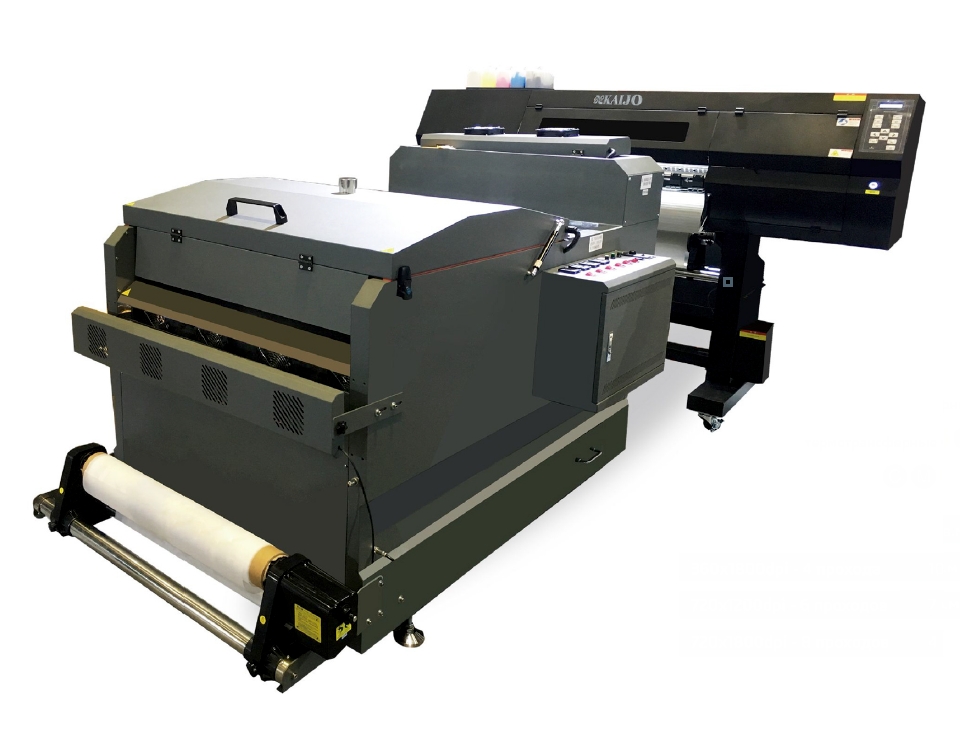
Direct-to-film (DTF) printing is revolutionizing the custom garb enterprise. Whether you are a small commercial enterprise proprietor, a printing enthusiast, or an image clothier, information on the ins and outs of DTF printing will let you unencumber new opportunities and increase your craft.
Table of Contents
What is DTF Printing?
DTF printing involves shifting designs onto material using specially formulated inks and a thin film. Unlike conventional strategies, DTF prints are flexible, long-lasting, and colourful, making them a remarkable choice for various programs.
Why Choose DTF Printing?
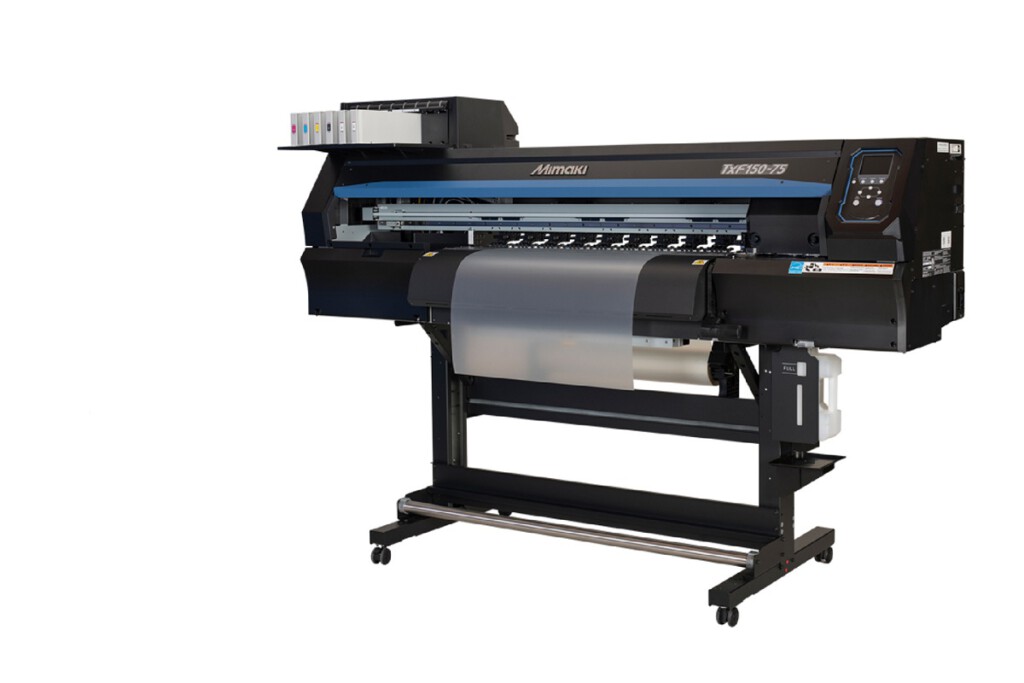
Versatility
DTF printing works on a variety of cloth, together with cotton, polyester, blends, or maybe non-material substances like leather-based and nylon. DTF Printers This versatility permits you to expand your product offerings and cater to various shoppers.
High-Quality Prints
DTF produces colourful and long-lasting prints with excessive color accuracy and incredible information. DTF Printers prints are also stretchable and resistant to cracking, ensuring that your designs remain intact over the years.
Cost-Effective
DTF printing is powerful for both small and large orders. It eliminates the need for pre-remedy, reducing labor costs and setup time.
Customization
With DTF, you can easily create custom designs, making it best for custom-designed clothing and promotional merchandise. DTF Printers The machine is simple, considering brief turnaround times.
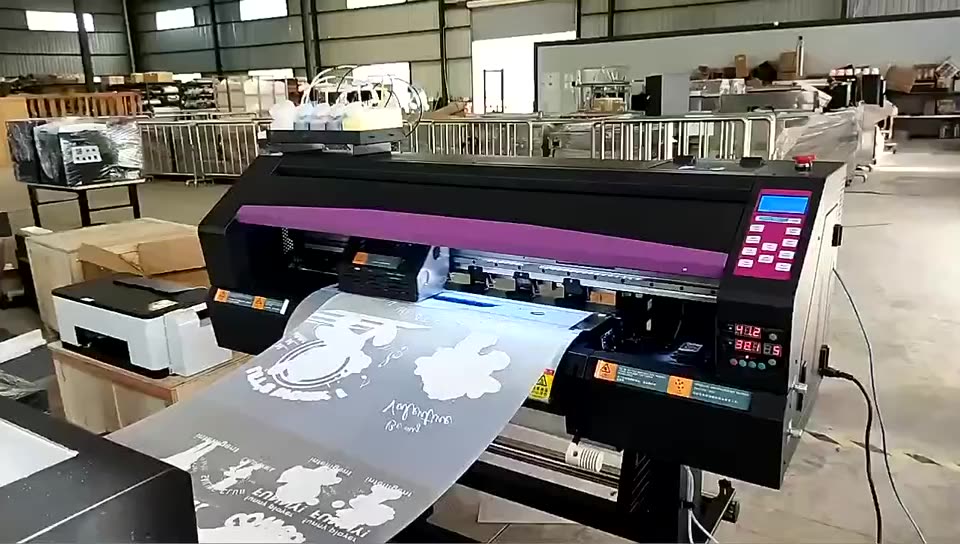
Essential Equipment for DTF Printing
To get commenced with DTF printing, you may want the following device:
DTF Printer: Specialized printers designed for DTF inks and movies.
DTF Inks: Pigment-primarily based inks that offer colourful sunglasses and sturdiness.
Transfer Film: A unique film that holds and transfers the inkand transfers the ink onto the cloth.
Heat Press: A device that uses warm temperature and strain to interchange the layout from the movie to the cloth.
Powder Adhesive: Ensures the ink adheres well to the cloth.
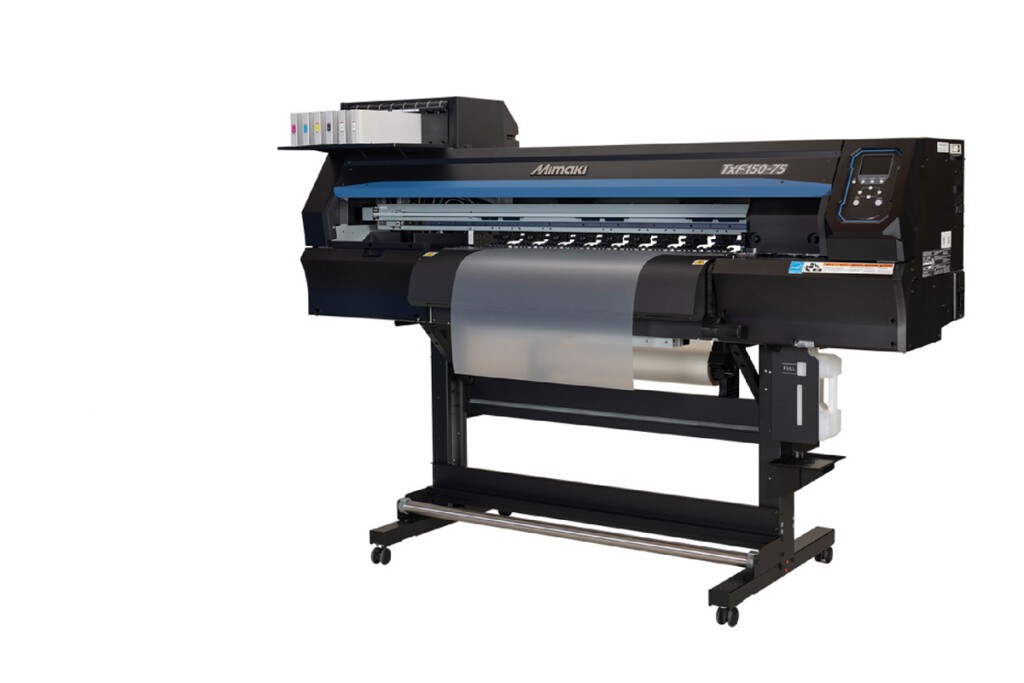
Types of Compatible Fabrics
DTF printing is compatible with a sizable variety of fabrics consisting of:
Cotton: Ideal for t-shirts, hoodies, and different casual putons.
Polyester: Perfect for sports activities put on and activewear.
Blends: Great for merchandise that require a mixture of consolation and durability.
Speciality Fabrics: Suitable for objects like leather and nylon, increasing your innovative opportunities.
Step-through-Step Guide to DTF Printing
Step 1: Prepare Your Design
Use an image design software program to create or edit your format. DTF Printers Ensure it’s miles in a high-resolution layout for the notable print fine.
Step 2: Print Your Design
Load the transfer film into your DTF printer and print your design using DTF inks. Make sure to comply with the printer’s settings and tips for the most beneficial consequences.
Step 3: Apply Powder Adhesive
Sprinkle the powder adhesive flippantly over the broadcast movie while the ink is still wet. Shake off any more excellent powder to ensure a smooth end.
Step 4: Cure the Film
Place the film in a curing oven or use a warm press to soften the adhesive powder and ensure it bonds nicely with the ink.
Step 5: Transfer the Design
Position the cured film onto your selected fabric and use a warmth press to interchange the layout. Apply the recommended temperature and stress settings for the quality outcomes.
Step 6: Peel the Film
Allow the fabric to cool barely before peeling off the switch movie. Your design must adhere to the cloth, leaving a colourful and robust print.
Maintenance Tips
Clean Regularly: Keep your printer and warmth press smooth to save you any buildup of ink or adhesive.
Use Quality Supplies: Invest in excellent inks, movies, and adhesives to ensure your gadget’s first-class effects and sturdiness.
Regular Calibration: Calibrate your printer regularly to hold colour accuracy and produce high-quality print.
Store Properly: Store your transfer films and inks in a fab, dry area to save you from degradation.
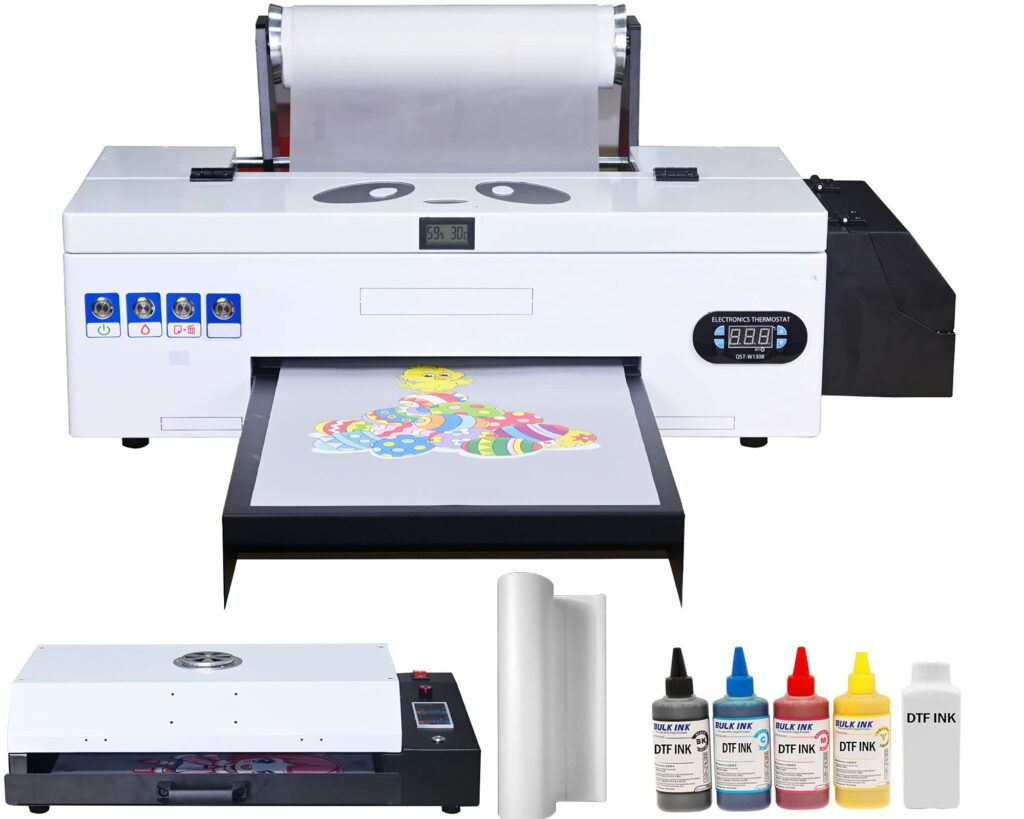
Troubleshooting Common Issues
Issue: Faded Prints
Solution: Check your printer settings and ensure you use the correct ink and film. Also, make sure the adhesive powder is frivolously implemented.
Issue: Peeling Designs
Solution: Ensure your warmness press settings are correct. Apply enough pressure and the endorsed temperature for the proper time.
Issue: Ink Smudging
Solution: Allow the ink to dry slightly before using the adhesive powder. Ensure the curing method is thorough to prevent smudging.
DTF vs. DTG Printing
DTF (Direct-to-Film)
Versatility: Works on diverse materials.
Durability: Offers stretchable and crack-resistant prints.
Cost: More value-powerful for small to medium-sized orders.
DTG (Direct-to-Garment)
Fabric Limitation: Primarily works on cotton and cotton-mixture fabric.
Durability: This may require pre-remedy for sturdiness.
Cost: It can be more high-priced for smaller orders due to setup and pre-treatment.
Conclusion
DTF printing opens up possibilities for small industrial company proprietors, printing fanatics, and image designers. Its versatility, first-rate prints, price effectiveness, and simplicity of customization make it a fantastic choice for developing colourful and intense designs on a wide range of fabrics.
Ready to improve your printing skills? Explore our endorsed DTF printers and transform your innovative thoughts into cute prints today!
FAQs
1. What is DTF printing?
DTF printing, or Direct-to-Film printing, is a procedure that involves printing designs onto a particular switch film, which is then heated to fabric. This approach is considered versatile and can work on a wide variety of substances, including cotton, polyester, blends, and unique materials like leather and nylon.
2. Do I want any unique tool for DTF printing?
DTF printing requires particular gadgets, including a DTF printer, pigment-based totally DTF inks, transfer film, a warmness press, and powder adhesive. These gear ensure notable, long-lasting prints.
3. Is DTF printing suitable for small organizations?
Absolutely. DTF printing is a value-effective opportunity for small groups, permitting them to produce vibrant, lengthy-lasting prints without the need for a giant setup or pre-treatment, even on small order runs.
4. Can I use DTF printing on non-fabric materials?
Yes, one of the essential benefits of DTF printing is its versatility. It can be applied to non-cloth materials like leather and nylon, increasing your product offerings beyond traditional cloth gadgets.
5. How do I maintain my DTF printing gadget?
To hold your DTF printing system, frequently clean your printer and warmth press, use first-rate resources, calibrate the printer for colour accuracy, and store inks and films properly to save you degradation. Regular upkeep will help ensure your gadget’s toughness and maximum enjoyable overall performance.
6. What’s the number one difference between DTF and DTG printing?
While DTF and DTG are virtual printing techniques, DTF stands proud of its capacity to work on a greater diversity of substances without needing pre-treatment, making it more flexible. DTG, or Direct-to-Garment, regularly works on cotton and cotton-combination fabrics and might require pre-treatment for durable prints.






